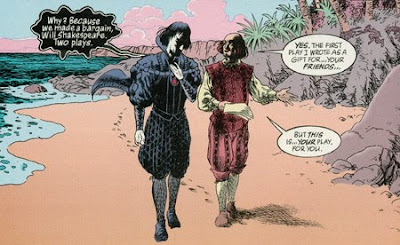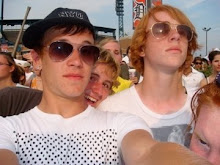 Beasts of Burden showcases the kind of episodic-yet-continuous storytelling that, in my humble opinion, is too-often missing from modern comics. Each of these four issues is a done-in-one tale that is more rewarding if you read the issue before and after it. Changes in characters flow from one issue to the next, but there is nothing that can’t be referenced or explained briefly in the next issue without feeling awkward and expository. Whereas as most comics today rely on expansive, decompressed narratives that feature entire issues where very little happens to progress the story, it is such a treat to read an issue and feel that you have gotten a complete story. JMS is using a similar formula on his current run on The Brave and the Bold for DC Comics, but his stories have been pushed into questionable continuity so as not to conflict with any of the long, drawn-out plots DC has been banking on for quite some time.
Beasts of Burden showcases the kind of episodic-yet-continuous storytelling that, in my humble opinion, is too-often missing from modern comics. Each of these four issues is a done-in-one tale that is more rewarding if you read the issue before and after it. Changes in characters flow from one issue to the next, but there is nothing that can’t be referenced or explained briefly in the next issue without feeling awkward and expository. Whereas as most comics today rely on expansive, decompressed narratives that feature entire issues where very little happens to progress the story, it is such a treat to read an issue and feel that you have gotten a complete story. JMS is using a similar formula on his current run on The Brave and the Bold for DC Comics, but his stories have been pushed into questionable continuity so as not to conflict with any of the long, drawn-out plots DC has been banking on for quite some time. Beasts also has pedigree going for it. Written by (somewhat) famous indie comic creator Evan Dorkin (whose Milk and Cheese dug into my consciousness at a young age thanks to its frequent appearance on the television show Roseanne in the background), Beasts shows a maturity and confidence in its storytelling. It almost shocked me to see Beasts nominated for an Eisner for “Best Publication for Teens,” not because it isn’t worthy, but because it hardly feels like it’s toned down for a younger audience. I know I was certainly saddened and stunned when the end of the first issue came and the eaten animal comrades didn’t emerge unscathed from the frog’s stomach.
 Dorkin also writes to his artist’s strengths. In Jill Thompson’s case, the strengths are many. One of the few creators to be handed the keys to the kingdom of The Endless of Sandman fame with Neil’s blessing, Thompson’s work leaps across genres from quirky-but-traditional (her series work in Sandman) to manga (Death: At Death’s Door), to children-appropriate (Scary Godmother) to painterly (here, obviously). Thanks to her long and varied career, Thompson’s watercolor work doesn’t feel stiff and posed like so many other paint-based comics illustrators. Instead, her palette breathes and comes to vivid life. I would go so far as to say that Thompson is one of the only comics painters whose work I look forward to with glee and not dread.
Dorkin also writes to his artist’s strengths. In Jill Thompson’s case, the strengths are many. One of the few creators to be handed the keys to the kingdom of The Endless of Sandman fame with Neil’s blessing, Thompson’s work leaps across genres from quirky-but-traditional (her series work in Sandman) to manga (Death: At Death’s Door), to children-appropriate (Scary Godmother) to painterly (here, obviously). Thanks to her long and varied career, Thompson’s watercolor work doesn’t feel stiff and posed like so many other paint-based comics illustrators. Instead, her palette breathes and comes to vivid life. I would go so far as to say that Thompson is one of the only comics painters whose work I look forward to with glee and not dread. My own journey with Beasts came after seeing an advertisement in a Star Wars comic (also published by Dark Horse) and biting for the animal-based premise. After I took a gamble on these four issues, I eagerly sought out the compilations that previous Beasts stories appeared in, paying a bit extra to get those that are out of print. Dark Horse graciously offered all but one for free online, but I needed these bound and on my shelf. I sincerely hope that the free offers drag more people to explore Burden Hill and discover a perfect use of monthly comics outside of the regular mainstream hullabaloo. I know I'm in for more.
My own journey with Beasts came after seeing an advertisement in a Star Wars comic (also published by Dark Horse) and biting for the animal-based premise. After I took a gamble on these four issues, I eagerly sought out the compilations that previous Beasts stories appeared in, paying a bit extra to get those that are out of print. Dark Horse graciously offered all but one for free online, but I needed these bound and on my shelf. I sincerely hope that the free offers drag more people to explore Burden Hill and discover a perfect use of monthly comics outside of the regular mainstream hullabaloo. I know I'm in for more.

















